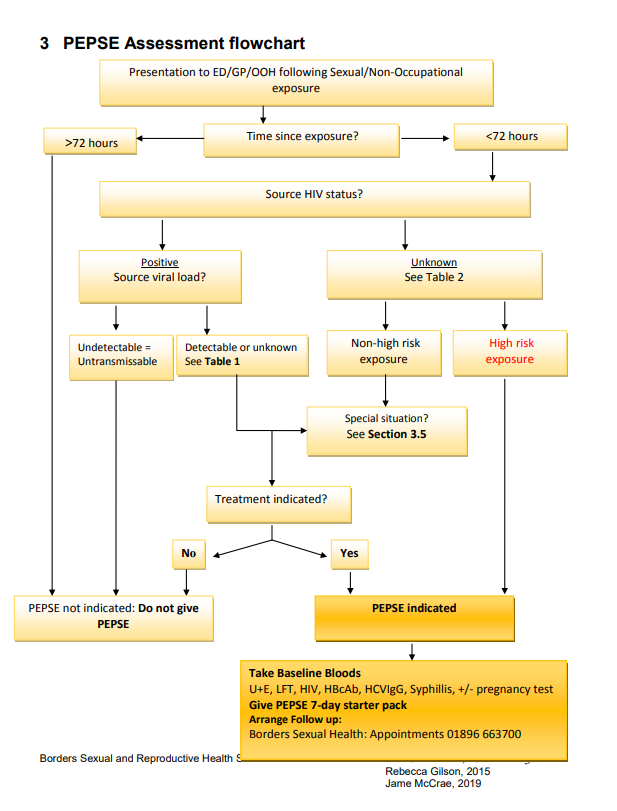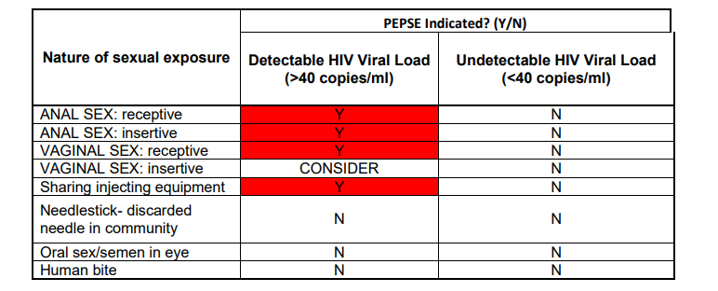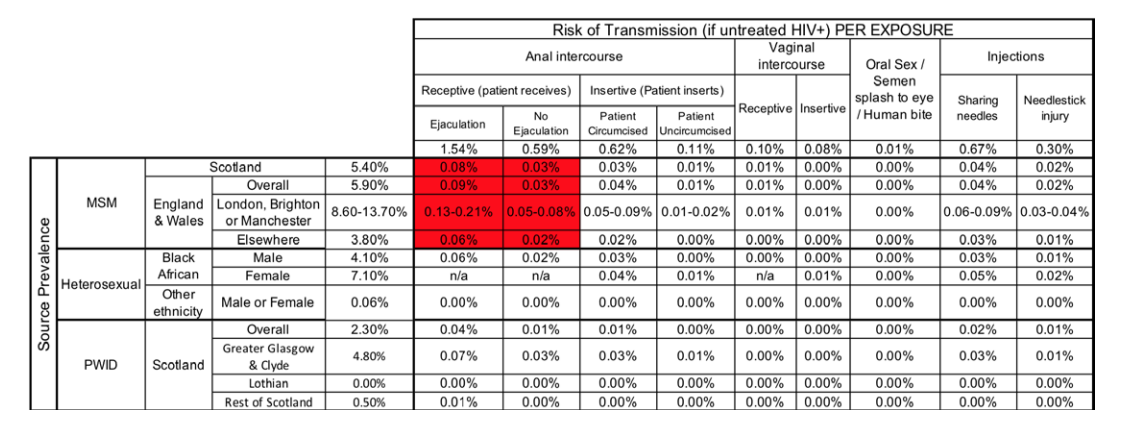
3.1 Overview of PEPSE
- PEPSE reduces the risk of transmission of HIV by almost 80%.
- It is generally given where transmission risk approaches/exceeds 0.1%.
- PEPSE is most effective if given within 24h of exposure but can be
administered up to 72h. Beyond 72h, PEPSE is not effective. - PEPSE is available at BSH, Emergency departments at BGH.
3.2 Risk of HIV transmission
Risk of transmission varies with:
- Nature of sexual contact
- HIV serostatus of source (and viral load)
- If serostatus unknown, background prevalence of HIV in source risk
group (e.g. MSM/Heterosexual, ethnicity, PWID etc.)
- Number of exposures within a 72h period (risk is cumulative)
Use tables 1 & 2 below, together with the flowchart above, to determine if PEPSE is
indicated.
3.3 Table 1: Source is known HIV+

If source is known HIV+ get details (NB: often the patient is in contact with the source, and can find out these details during the consultation):
- Consultant
- Treatment centre
- Treatment history (including details of drug resistance)
- HIV viral load (90% of patients on treatment have an undetectable viral load)
Undetectable = Untransmissible: Patients with viral load <40 CANNOT transmit HIV.
3.4 Table 2: Source HIV status unknown
- The percentages in this table are to help you calculate cumulative risk from
multiple sexual exposures. - High-risk exposures (in red) should be given PEPSE based on ONE sexual
encounter, regardless of % risk. - If source is on PrEP, DO NOT GIVE PEPSE.

NB: In Scotland in 2017 the only new HIV diagnoses in PWID were in GGC & Lanarkshire.
3.5 Special situations where it is appropriate to prescribe PEPSE despite calculated risk
- MSM who have had receptive anal intercourse (See Table 2)
- Multiple sexual encounters (within previous 72h) where cumulative risk likely exceeds 0.1% (Use Table 2 to calculate this risk)
- Sexual assault, involving female patient, receptive anal sex or traumatic vaginal sex, where the source is from a country of high HIV prevalence* (traumatic intercourse may increase transmission rates).
- Extreme anxiety from the patient (prescribe PEPSE and refer to sexual health clinic for further discussion).
* See “Blood Borne Viruses – Background Information for Risk Assessment”




